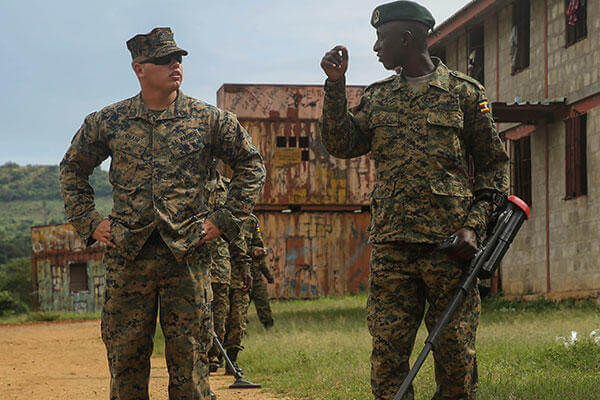CAMP SINGO, Uganda — U.S. Marines and sailors are helping build the engineering and logistical capabilities of the Uganda People's Defense Force at Camp Singo, Uganda.
This is the second mission to Uganda for these Special-Purpose Marine Air-Ground Task Force Crisis Response-Africa Marines and sailors' deployment. The first mission began in late August and ended
"This is a new mission for us to specifically do [Mine-Resistant, Ambushed-Protected vehicle] maintenance," said First Lt. Christopher Leisring, the SPMAGTF-CR-AF logistics team leader. "The first iteration focused heavily on MRAP maintenance and heavy equipment operations."
The U.S. military announced at the beginning of the year they would send refurbished MRAPs from the Combined Joint Task Force-Horn of Africa to Uganda. With the delivery of these vehicles also comes an importance on the training and understanding of these vehicles. They will help support the African Union mission in Somalia, or AMISOM, against terrorist group, Al-Shabab. Keeping these mine-resistant vehicles up and running throughout their AMISOM mission in Somalia is vital to mitigating one of the largest threats: improvised explosive devices.
"This nine-week period we are covering MRAP maintenance and operations, communications, radio operations, medical, heavy equipment operations, utilities, civil engineering and demolitions. We have expanded the scope of the mission here," Leisring said. "The eight skills we will cover will enable them in terms of distribution operations and freedom of movement."
In order to have freedom of movement in possible danger areas, convoys need to know how to identify and react to IED threats. This means they need to have and understand the equipment that will get them to their destination safely.
Leisring said having the equipment and knowing how to use and fix it is essential. Whether it is equipment to build roads, fortify fighting positions or forward operating bases, it enables them to move personnel and materials around the battle space. These engineering and logistical capabilities are what improve the security of any convoy, position or base, he added.
Related video:





























